A portable microscope in the service of a geek
Hi Geektimes! Recently, a post about a portable microscope, which was not very friendly, was skipped here . I’m the owner of the exact same device, and I don’t agree with the comments, so I want to share my version of the impressions of the device, and answer almost all the commentators from that post for one.

I took it just the same in Dadget (though much earlier than the author of the previous post), and it cost me much cheaper. Well, the price will change a hundred times more, and in general, on the topic of why X and not Y rubles - not to me, but to the Dadget. :)

Of course, expect from an inexpensive Chinese devicea lot is not necessary, and we won’t get a zoom like in CSI. To be honest, the microscope itself can hardly be called a masterpiece: it looks simple, all of it is plastic, but! There is one important “but” that makes it a gorgeous thing that, by its fascination, can compete with many other technical iron pieces. It is simple, like iPod Shuffle, works without any tricks and long settings and makes it easy to share what you have observed.
The manufacturer claims a five-megapixel camera module. Well, he is available. Along with it there are eight LEDs with an adjustable suspension level, a large swivel-tilt screen and a slot for microSD memory cards (up to 32 gigabytes in volume) and some controls. In general, everything is visible in the photo.
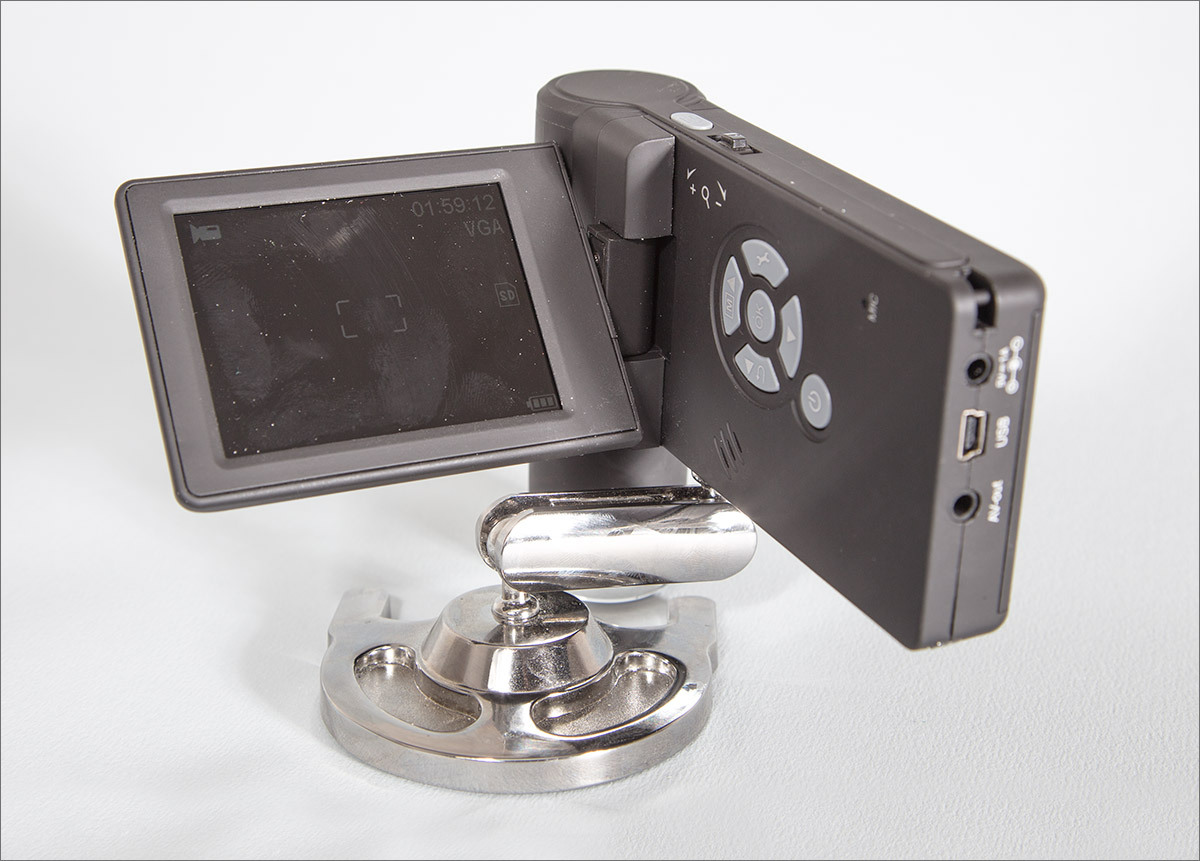
Little? On the one hand, yes. On the other - I have already said, the model - nowhere is easier, take it and use it. This is the first, main, main, most important and most remarkable plus of it.
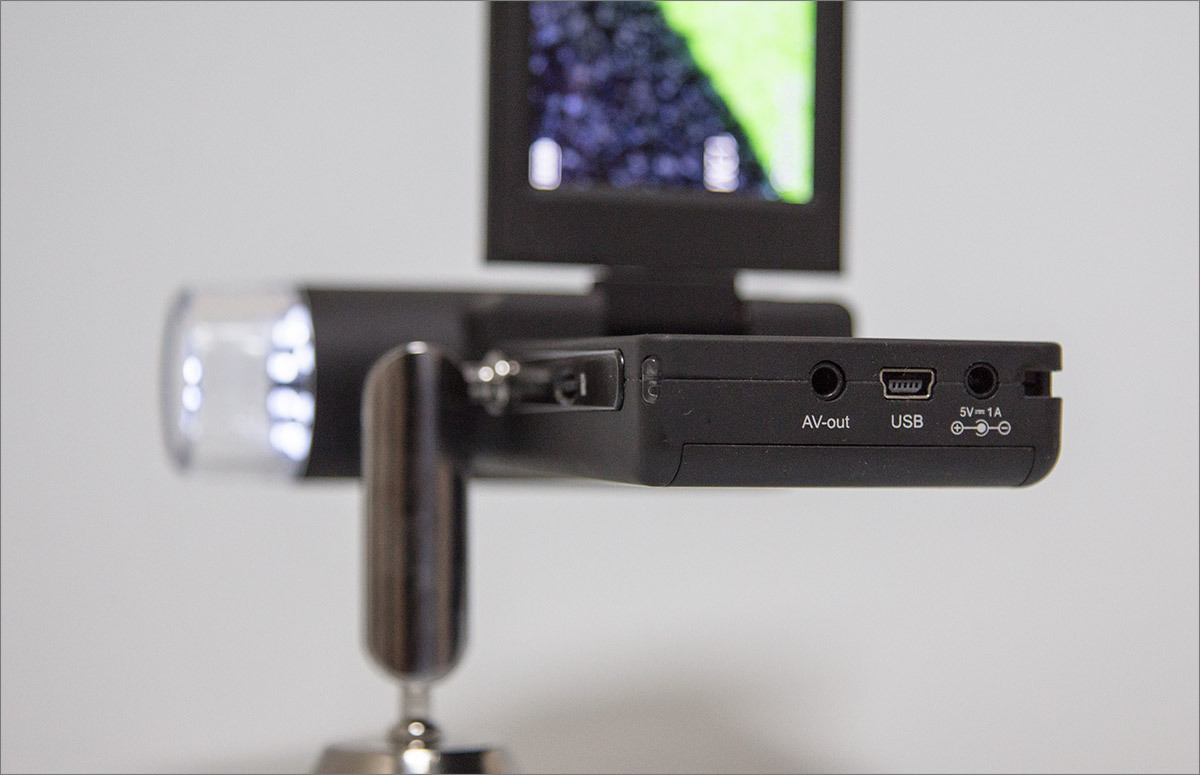
In the comments it was suggested to use a DSLR with reversing rings, a super-macro camera-soap dish, and a drop of water or glycerin to plant on the lens of a cellphone’s camera ...
Dear commentators, can you imagine how it is COMFORTABLE to use this for everyone? How much does the cheapest used DSLR, lens to it and reversing ring cost? How to collective farm normal backlight?
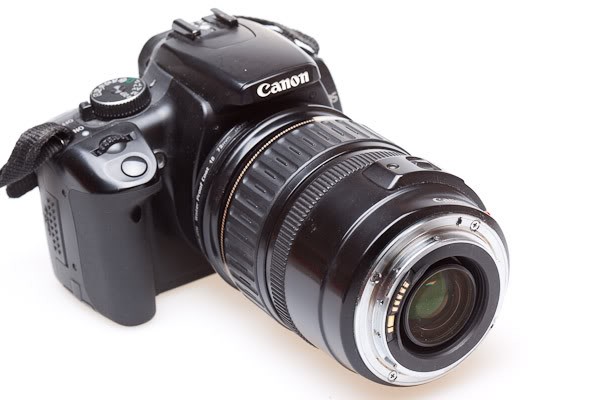
Do many soap holders have a tripod mount? Which of them have a rotary display? How much do they cost? No, of course, they are universal, and you can take off a children's matinee on them, but not on a microscope.
Here a man in the sandbox wrote about the experience of remaking an old soap box into something monstrous. Read, the material is interesting. The trouble is that the result is so-so, but as an experiment, everything is simply excellent.
About the drop on the camera, I generally keep quiet, amazing convenience. :)
This is what this microscope has, and what it doesn’t even smell like in all of these analogs without a serious file revision:
Adjustable direct illumination. It is necessary - turned on, not necessary - turned off, the brightness is regulated over a fairly wide range.
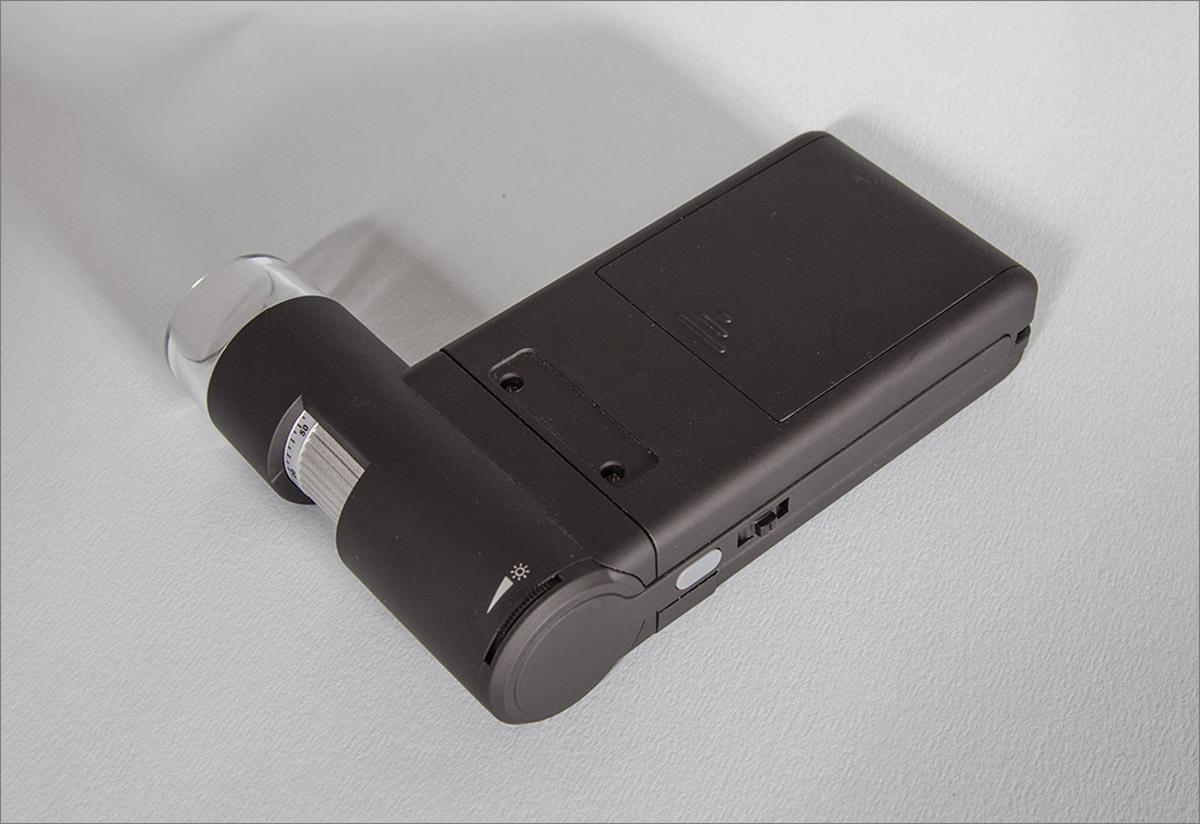
Gadget Power. Firstly, it is carried out from the battery, which is clearly licked from old Nokia mobile phones. Even the marking without a drop of embarrassment left the original. You can always find a spare. In addition, you can power it from USB and get an “eternally working” microscope, and watch the picture on a computer screen. Soap dishes (like many DSLRs) from USB usually only know how to discharge.

Simplicity of work and the ability to look at objects “in real time”. Just open the screen and ... everything, we are ready to explore. Even a memory card is not required to get started - that is, observing everything small and interesting. Opening the box with the microscope, the first ten minutes you scamper around the apartment like crazy, apply a microscope to everything that you reach out and make inarticulate sounds. Traces of a pencil on paper: “Oooo!”; the surface of the mouse mat: “Y-s-s-s!”; yesterday's cookie: “Ahhhhhhhhhhhhhhhhhhhhhhhhhhhhhhhhhhhhhhhhhhhhhhhhhhhhhhh
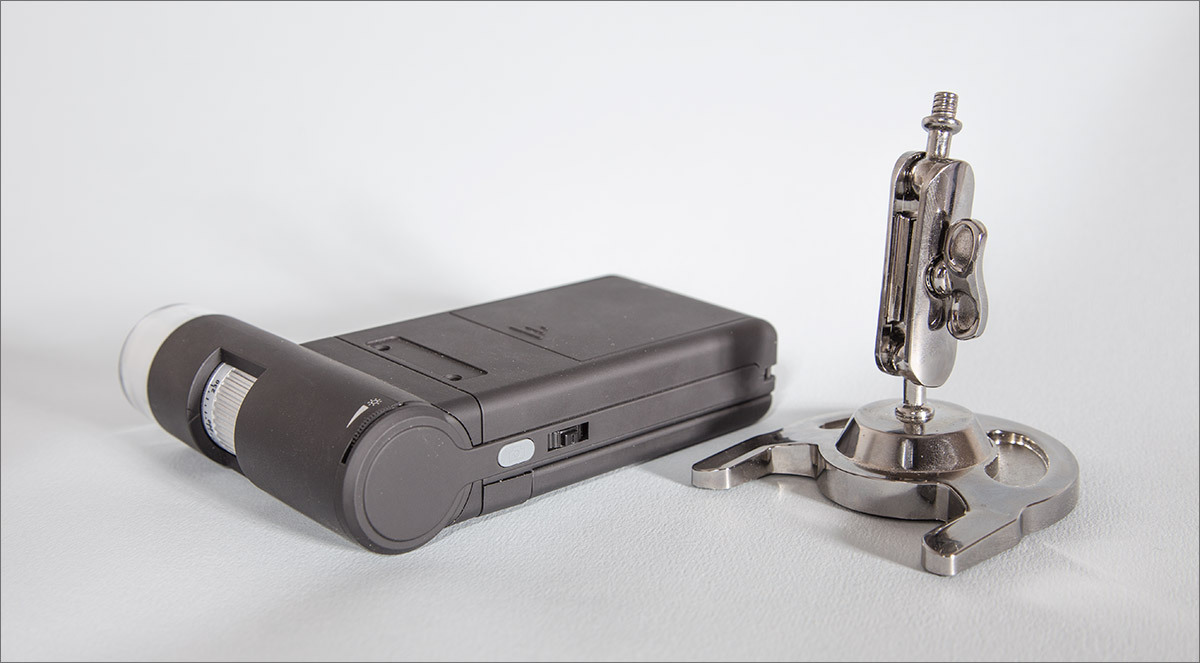
Included is a strange-looking tripod that allows you to install a microscope. It is fastened with a standard tripod thread, that is, you can use both conventional mini-tripods and a stage, or simply print suitable hardware on a 3D printer and observe at least “On Clearance” preparations, at least parts on a conveyor belt, at least micro soldering in real time. It can be given to employees of some quality control department so that people do not break their eyes, but simply and quickly control small details, since the microscope is simple and convenient. With a soap box or a “changeling” in the DSLR, this is at least difficult, but at the same time it is also expensive in finances.
Yes, it’s possible that the picture quality is far from what you can get on the 5D MK3 and an upside down 70-200, but the price (especially the ~ 7-8 thousand that you asked for a couple of months ago) is 100% consistent with that , what are you getting.
Photo of a metal surface? Easy peasy. Here is a regular knife.

The ceramic knife looks more boring:

Glossy paper with printing on it turns into something completely far from that smooth and shiny material that we can see and touch:
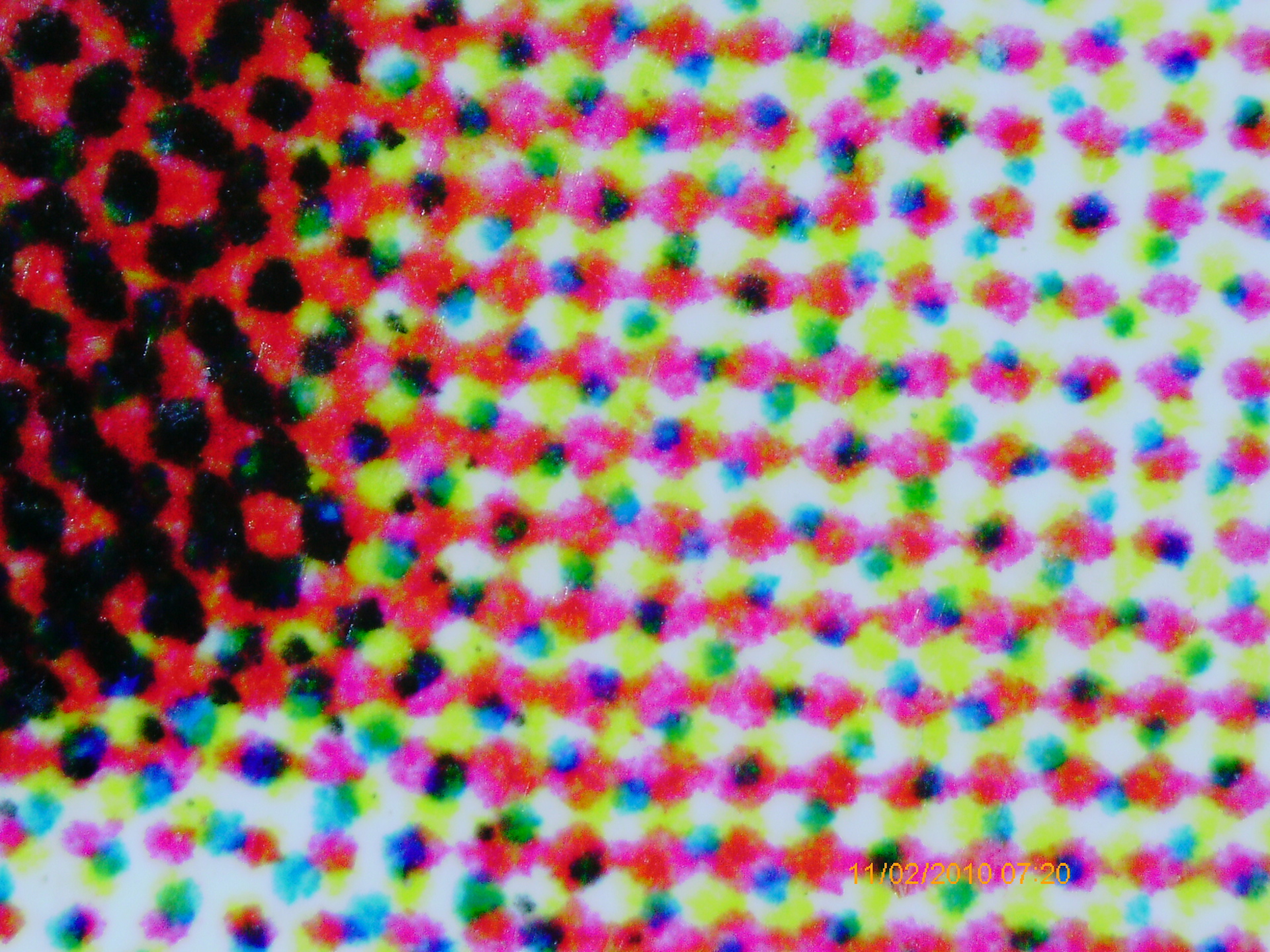
But the money looks and is generally scary: The
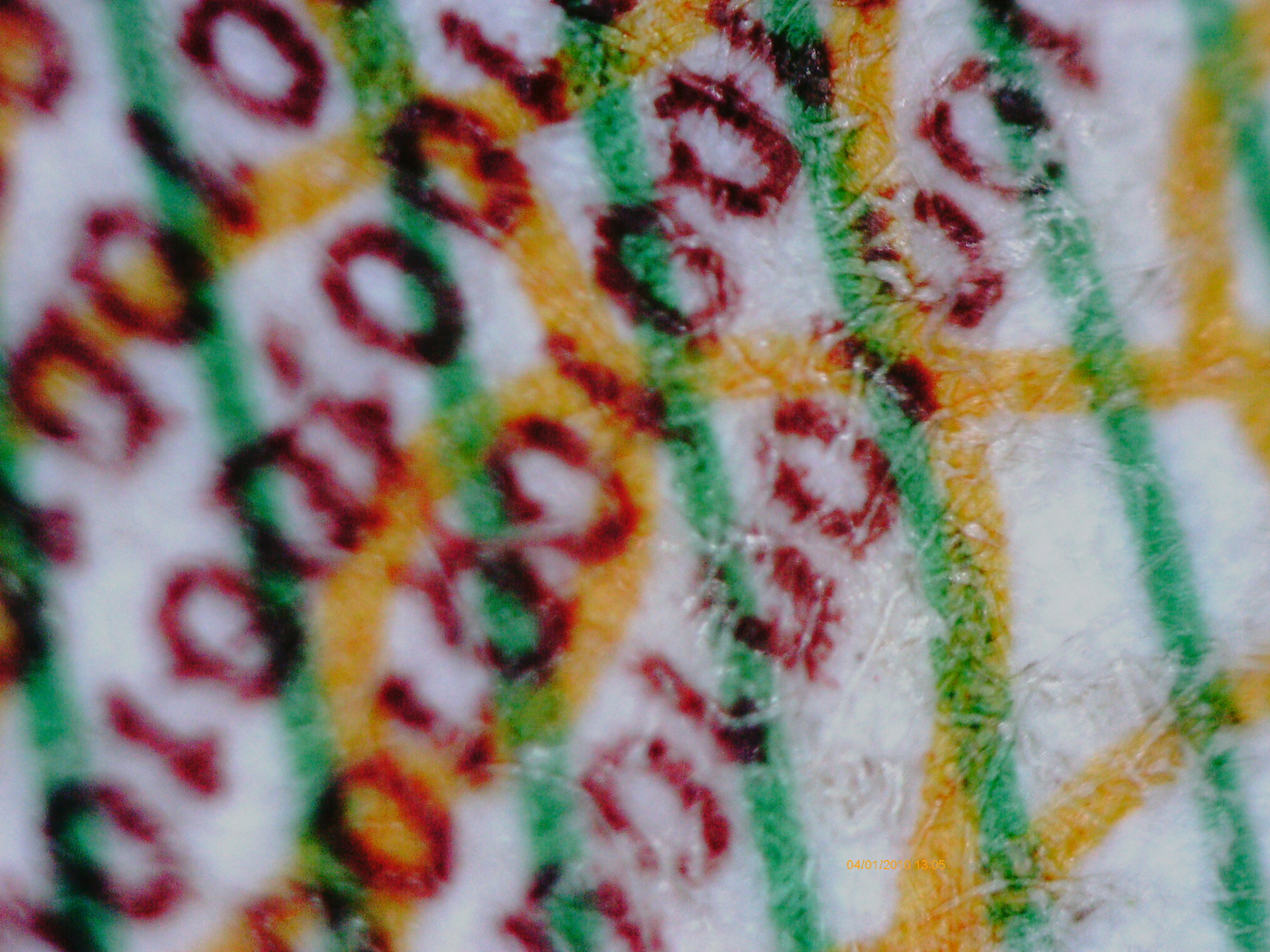
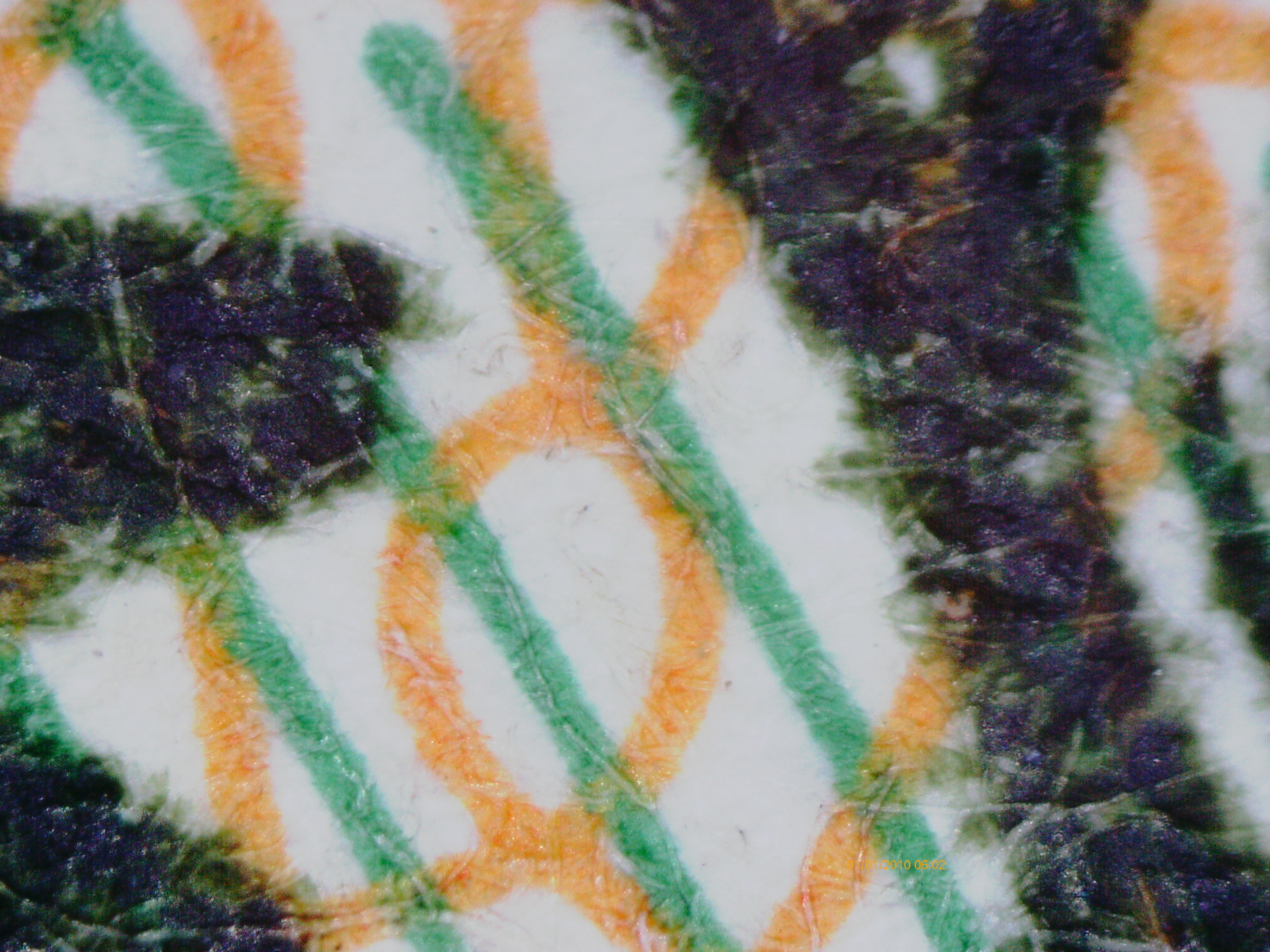
Razer ExactMate X control mouse pad is covered with uneven “irregularities”, for which the mouse sensor clings:

Ink on paper left by a fountain pen:
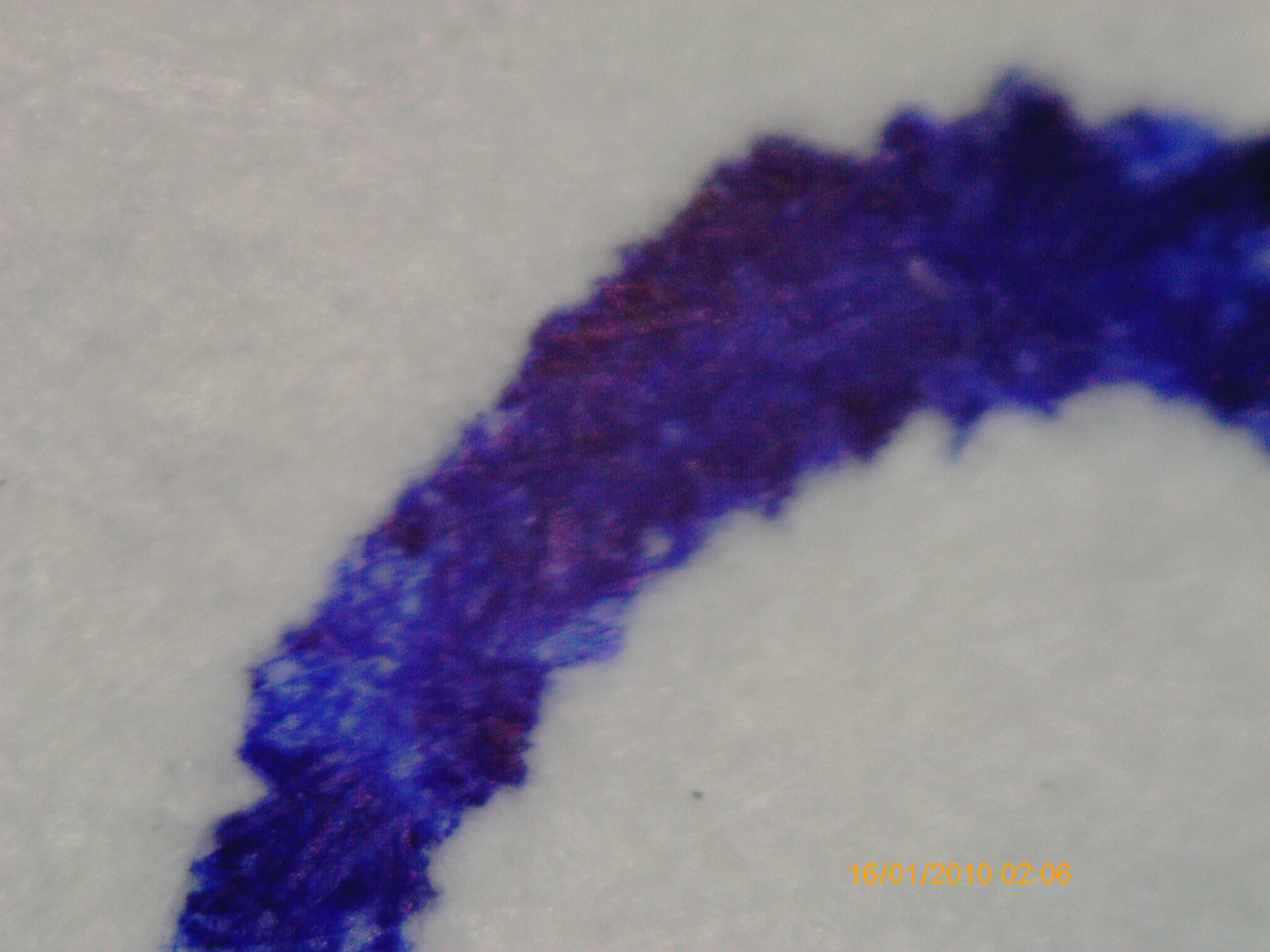
Genuine leather after chemical treatment:
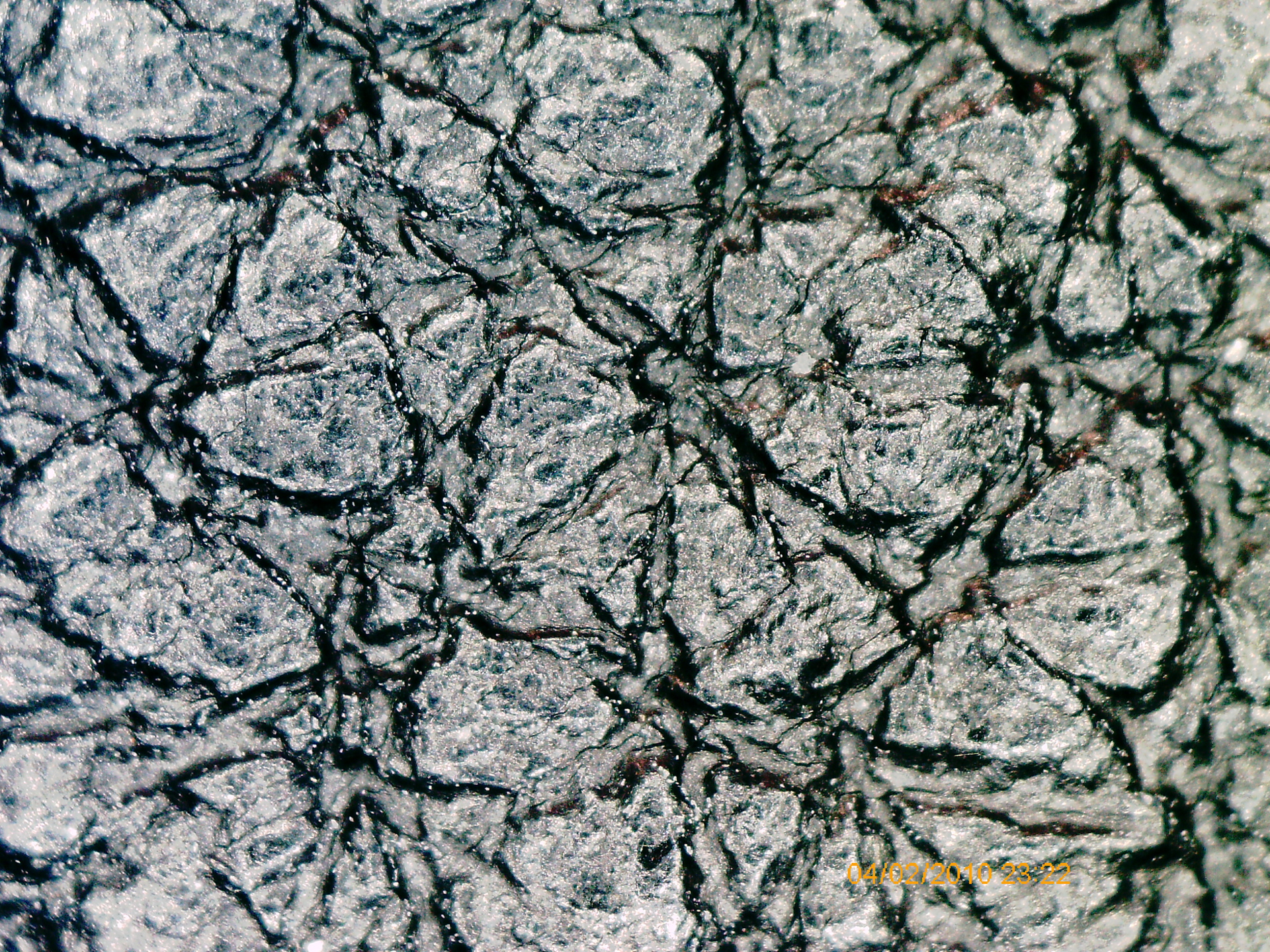
Cucumber? Mold? Damn it ...
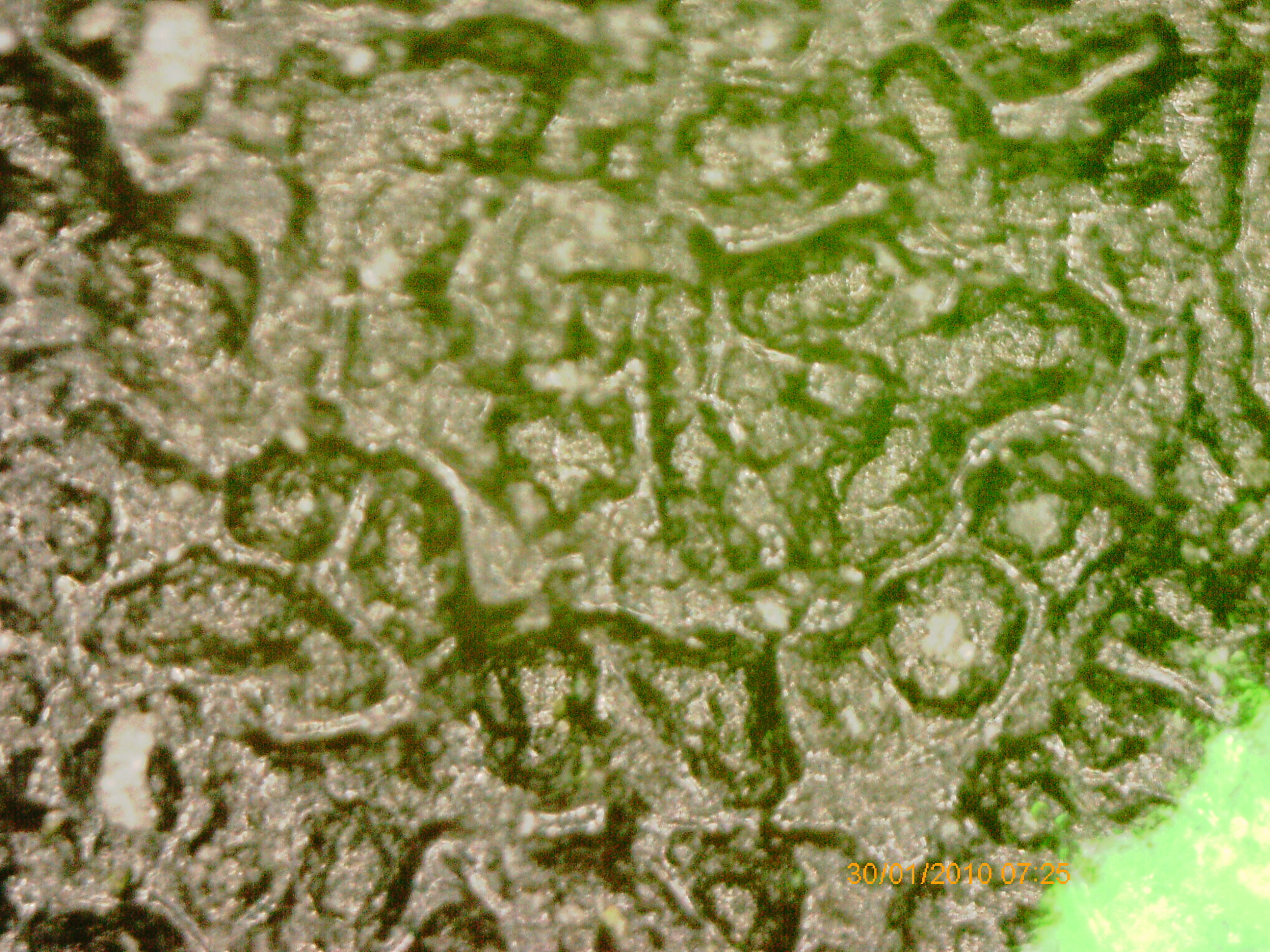
OLED display closed by glass:
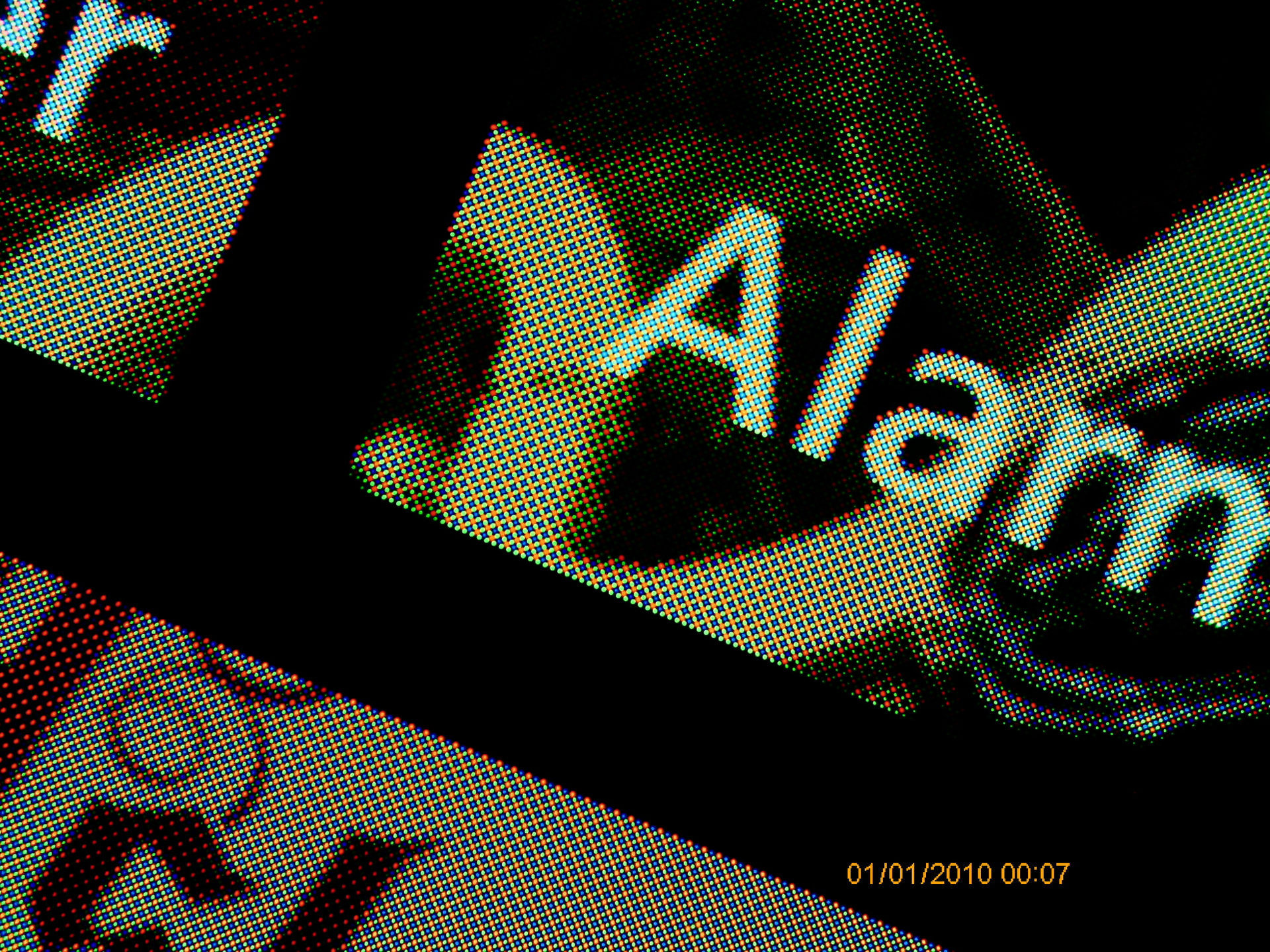
But the matte PLS display of the Samsung S27 A850D monitor. No, this is not a photograph out of focus, but a matte finish “blurs” the picture.

Here, in principle, the author of the previous post said everything for me. Portability is portability, and you can work comfortably behind a large screen. The software, of course, is quite “Chinese” (styled under Windows XP and with some kind of coding), but it works: videos are recorded, photos are taken, in the viewer you can specify the shooting scale and measure distances and angles.

Unfortunately, no information about the zoom is sent to the computer, so either the position of the zoom wheel will have to be remembered either by yourself or entrusted with paper and pencil. In addition, do not neglect the calibration and measurement of real known values before recording the results.
In addition, just recently, another interesting GT post by quiensabededicated to a USB microscope and processing photos from it. I recommend reading it. :)
The gadget itself may be inferior to super-pictures from an expensive DSLR, but microphotographs are quite clear. There’s nothing to complain about, although the laws of physics cannot be rewritten or surpassed. Firstly, the larger the approximation at the same distance to the subject, the smaller the depth of field. Since neither aperture adjustment, nor any other features (such as stakeing a few photos at different focus levels) are provided here, it is simply impossible to observe some things (such as suede) at maximum magnification: you have to take several frames and stitch them together third-party software. Secondly, something looks bad in reflected light and you need to look at it “in the light”, and for this you already need an object table and a mirror / light source under the object. And this thing will have to be acquired independently ... Well, of course, looking at objects that are less than the resolution of the optics, in this case simply will not work.

Otherwise, the device is very, very good: you can easily use it as a quick-access and simple control tool at any site of the quality control department of not-too-nano-products. He will record the confirmation of something on the card, and take the video, and have the software on the PC, so you don’t even need to look at the small screen: you can send the picture directly to the large monitor (or even to the TV, for this an AV output is provided) .
It is time to calculate all the pros and cons. Unconditional advantages I would call the following features:
Just good and nice features include:
There are minuses too, and I won’t hide them:
Perhaps he didn’t go far from webcams. Does not remove matinees. Does not take photos in 24 full megapixels. And yet, it is not made of a single piece of aluminum, does not have a sapphire protective glass and its design was not created by Johnny Ive. But it will serve wonderfully both for purely entertaining and creative purposes, and for work. For example, such a device is the best friend of numismatists: to evaluate the quality of a coin and get a clear picture of the mark - there’s nothing to do.

The idea of using it in any home and not very hobby or professional activity also looks attractive: working with miniatures, some jewelry soldering, repairing microelectronics ... in general, in any field of activity where it is necessary to operate with fractions of a millimeter. A model is also suitable for use in some educational institutions: display a picture from a microscope on a projector or screen, show any experiments at the micro level, or simply tell you that many things are completely different from what they seem. And he can be entrusted to students. Now imagine the same thing with a drop of water on the camera or with a DSLR and reversing rings.

Well, the price will settle down sooner or later. That's all for me, have a nice day!

I took it just the same in Dadget (though much earlier than the author of the previous post), and it cost me much cheaper. Well, the price will change a hundred times more, and in general, on the topic of why X and not Y rubles - not to me, but to the Dadget. :)

Of course, expect from an inexpensive Chinese devicea lot is not necessary, and we won’t get a zoom like in CSI. To be honest, the microscope itself can hardly be called a masterpiece: it looks simple, all of it is plastic, but! There is one important “but” that makes it a gorgeous thing that, by its fascination, can compete with many other technical iron pieces. It is simple, like iPod Shuffle, works without any tricks and long settings and makes it easy to share what you have observed.
What's inside
The manufacturer claims a five-megapixel camera module. Well, he is available. Along with it there are eight LEDs with an adjustable suspension level, a large swivel-tilt screen and a slot for microSD memory cards (up to 32 gigabytes in volume) and some controls. In general, everything is visible in the photo.

Little? On the one hand, yes. On the other - I have already said, the model - nowhere is easier, take it and use it. This is the first, main, main, most important and most remarkable plus of it.

In the comments it was suggested to use a DSLR with reversing rings, a super-macro camera-soap dish, and a drop of water or glycerin to plant on the lens of a cellphone’s camera ...
Dear commentators, can you imagine how it is COMFORTABLE to use this for everyone? How much does the cheapest used DSLR, lens to it and reversing ring cost? How to collective farm normal backlight?

Do many soap holders have a tripod mount? Which of them have a rotary display? How much do they cost? No, of course, they are universal, and you can take off a children's matinee on them, but not on a microscope.
Here a man in the sandbox wrote about the experience of remaking an old soap box into something monstrous. Read, the material is interesting. The trouble is that the result is so-so, but as an experiment, everything is simply excellent.
About the drop on the camera, I generally keep quiet, amazing convenience. :)
This is what this microscope has, and what it doesn’t even smell like in all of these analogs without a serious file revision:
Adjustable direct illumination. It is necessary - turned on, not necessary - turned off, the brightness is regulated over a fairly wide range.

Gadget Power. Firstly, it is carried out from the battery, which is clearly licked from old Nokia mobile phones. Even the marking without a drop of embarrassment left the original. You can always find a spare. In addition, you can power it from USB and get an “eternally working” microscope, and watch the picture on a computer screen. Soap dishes (like many DSLRs) from USB usually only know how to discharge.

Simplicity of work and the ability to look at objects “in real time”. Just open the screen and ... everything, we are ready to explore. Even a memory card is not required to get started - that is, observing everything small and interesting. Opening the box with the microscope, the first ten minutes you scamper around the apartment like crazy, apply a microscope to everything that you reach out and make inarticulate sounds. Traces of a pencil on paper: “Oooo!”; the surface of the mouse mat: “Y-s-s-s!”; yesterday's cookie: “Ahhhhhhhhhhhhhhhhhhhhhhhhhhhhhhhhhhhhhhhhhhhhhhhhhhhhhhh

Included is a strange-looking tripod that allows you to install a microscope. It is fastened with a standard tripod thread, that is, you can use both conventional mini-tripods and a stage, or simply print suitable hardware on a 3D printer and observe at least “On Clearance” preparations, at least parts on a conveyor belt, at least micro soldering in real time. It can be given to employees of some quality control department so that people do not break their eyes, but simply and quickly control small details, since the microscope is simple and convenient. With a soap box or a “changeling” in the DSLR, this is at least difficult, but at the same time it is also expensive in finances.
Interesting
Yes, it’s possible that the picture quality is far from what you can get on the 5D MK3 and an upside down 70-200, but the price (especially the ~ 7-8 thousand that you asked for a couple of months ago) is 100% consistent with that , what are you getting.
Photo of a metal surface? Easy peasy. Here is a regular knife.
The ceramic knife looks more boring:
Glossy paper with printing on it turns into something completely far from that smooth and shiny material that we can see and touch:
But the money looks and is generally scary: The
Razer ExactMate X control mouse pad is covered with uneven “irregularities”, for which the mouse sensor clings:
Ink on paper left by a fountain pen:
Genuine leather after chemical treatment:
Cucumber? Mold? Damn it ...
OLED display closed by glass:
But the matte PLS display of the Samsung S27 A850D monitor. No, this is not a photograph out of focus, but a matte finish “blurs” the picture.
PC software
Here, in principle, the author of the previous post said everything for me. Portability is portability, and you can work comfortably behind a large screen. The software, of course, is quite “Chinese” (styled under Windows XP and with some kind of coding), but it works: videos are recorded, photos are taken, in the viewer you can specify the shooting scale and measure distances and angles.

Unfortunately, no information about the zoom is sent to the computer, so either the position of the zoom wheel will have to be remembered either by yourself or entrusted with paper and pencil. In addition, do not neglect the calibration and measurement of real known values before recording the results.
In addition, just recently, another interesting GT post by quiensabededicated to a USB microscope and processing photos from it. I recommend reading it. :)
Work impressions
The gadget itself may be inferior to super-pictures from an expensive DSLR, but microphotographs are quite clear. There’s nothing to complain about, although the laws of physics cannot be rewritten or surpassed. Firstly, the larger the approximation at the same distance to the subject, the smaller the depth of field. Since neither aperture adjustment, nor any other features (such as stakeing a few photos at different focus levels) are provided here, it is simply impossible to observe some things (such as suede) at maximum magnification: you have to take several frames and stitch them together third-party software. Secondly, something looks bad in reflected light and you need to look at it “in the light”, and for this you already need an object table and a mirror / light source under the object. And this thing will have to be acquired independently ... Well, of course, looking at objects that are less than the resolution of the optics, in this case simply will not work.

Otherwise, the device is very, very good: you can easily use it as a quick-access and simple control tool at any site of the quality control department of not-too-nano-products. He will record the confirmation of something on the card, and take the video, and have the software on the PC, so you don’t even need to look at the small screen: you can send the picture directly to the large monitor (or even to the TV, for this an AV output is provided) .
Pros and cons
It is time to calculate all the pros and cons. Unconditional advantages I would call the following features:
- Easy to use;
- Compactness;
- Common type of battery;
- USB charging
- Auto on and off;
- The ability to stream work to a PC or large screen through an adapter;
- Adjustable backlight;
- Record video with sound.
Just good and nice features include:
- Good picture and video quality;
- Nice picking;
- A set of software for working under Windows and OS X;
There are minuses too, and I won’t hide them:
- The restrictive ring is not removed, and sometimes it is necessary to move the microscope closer to the object being studied in order to get the part of interest to us in focus;
- The position of the zoom ring is not recorded in EXIF photographs at all, so you can only measure distances and sizes on microphotographs by recording the shooting scale somewhere else (or by calibrating the values using the already known values in the frame);
- The interface of the microscope itself is somewhat sophisticated and not intuitive, but this is a matter of habit;
- Downloading a slide show of captured images on the microscope itself is accompanied by a long and boring animation that spends valuable time.
Conclusion
Perhaps he didn’t go far from webcams. Does not remove matinees. Does not take photos in 24 full megapixels. And yet, it is not made of a single piece of aluminum, does not have a sapphire protective glass and its design was not created by Johnny Ive. But it will serve wonderfully both for purely entertaining and creative purposes, and for work. For example, such a device is the best friend of numismatists: to evaluate the quality of a coin and get a clear picture of the mark - there’s nothing to do.

The idea of using it in any home and not very hobby or professional activity also looks attractive: working with miniatures, some jewelry soldering, repairing microelectronics ... in general, in any field of activity where it is necessary to operate with fractions of a millimeter. A model is also suitable for use in some educational institutions: display a picture from a microscope on a projector or screen, show any experiments at the micro level, or simply tell you that many things are completely different from what they seem. And he can be entrusted to students. Now imagine the same thing with a drop of water on the camera or with a DSLR and reversing rings.

Well, the price will settle down sooner or later. That's all for me, have a nice day!
